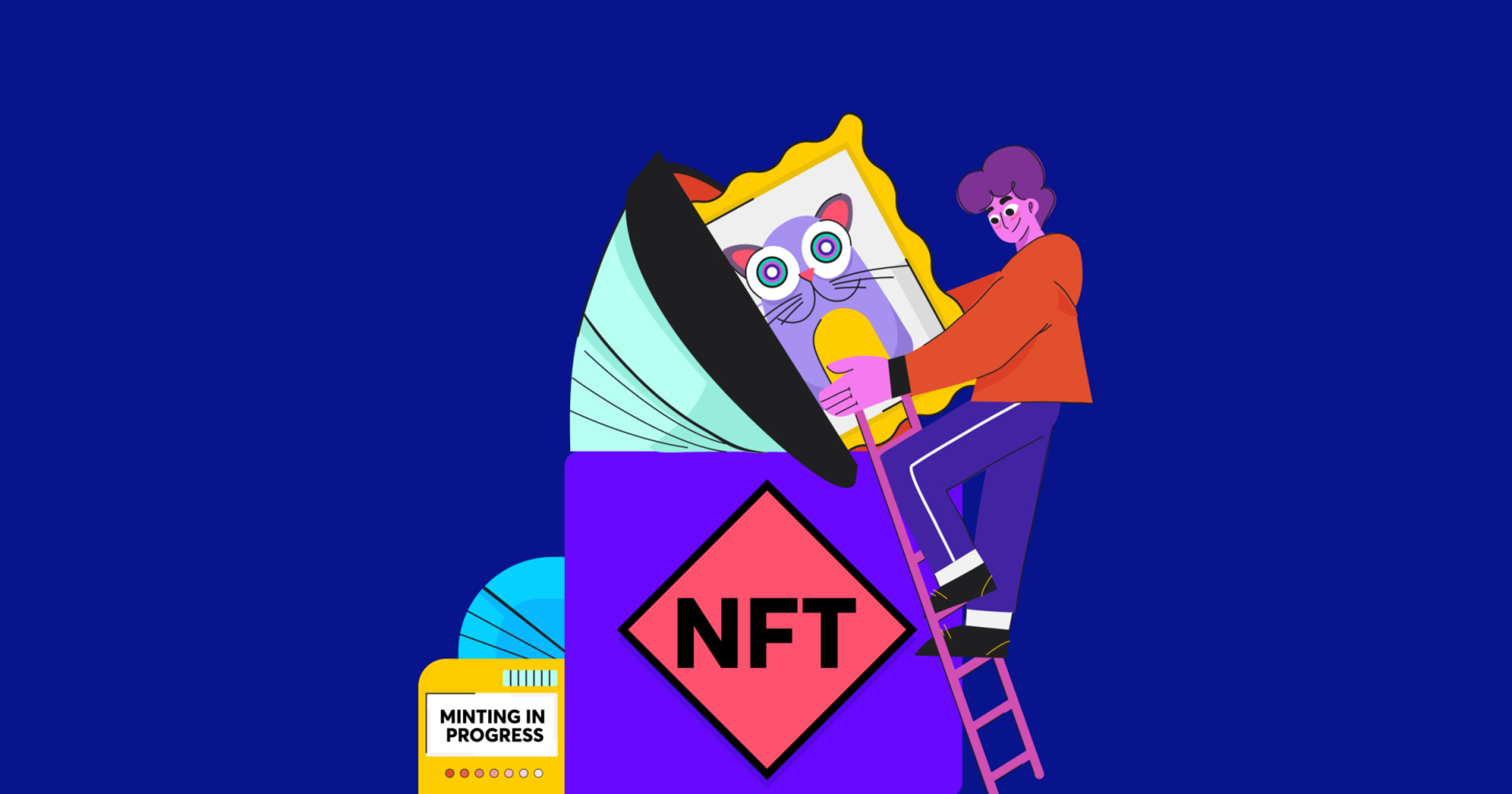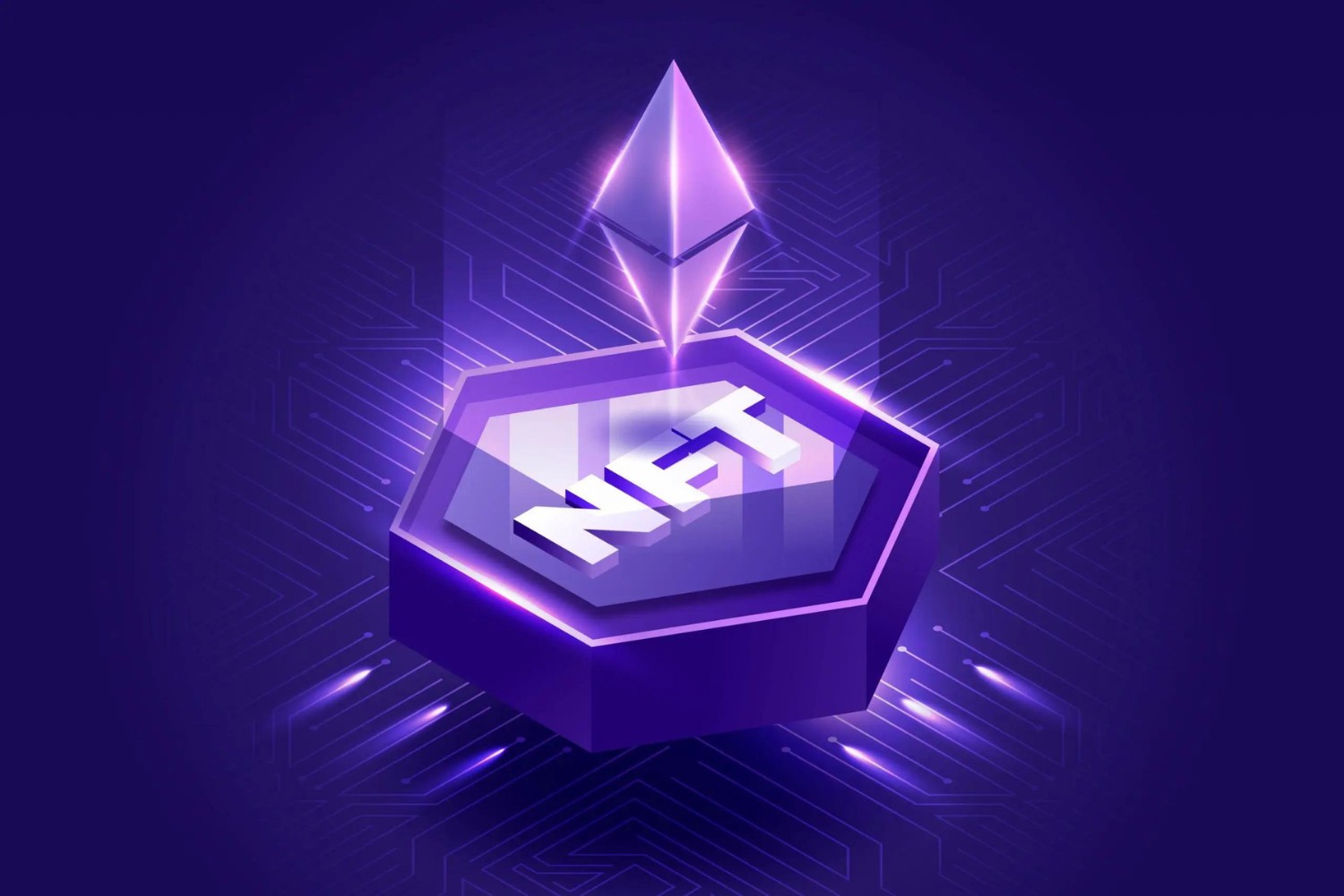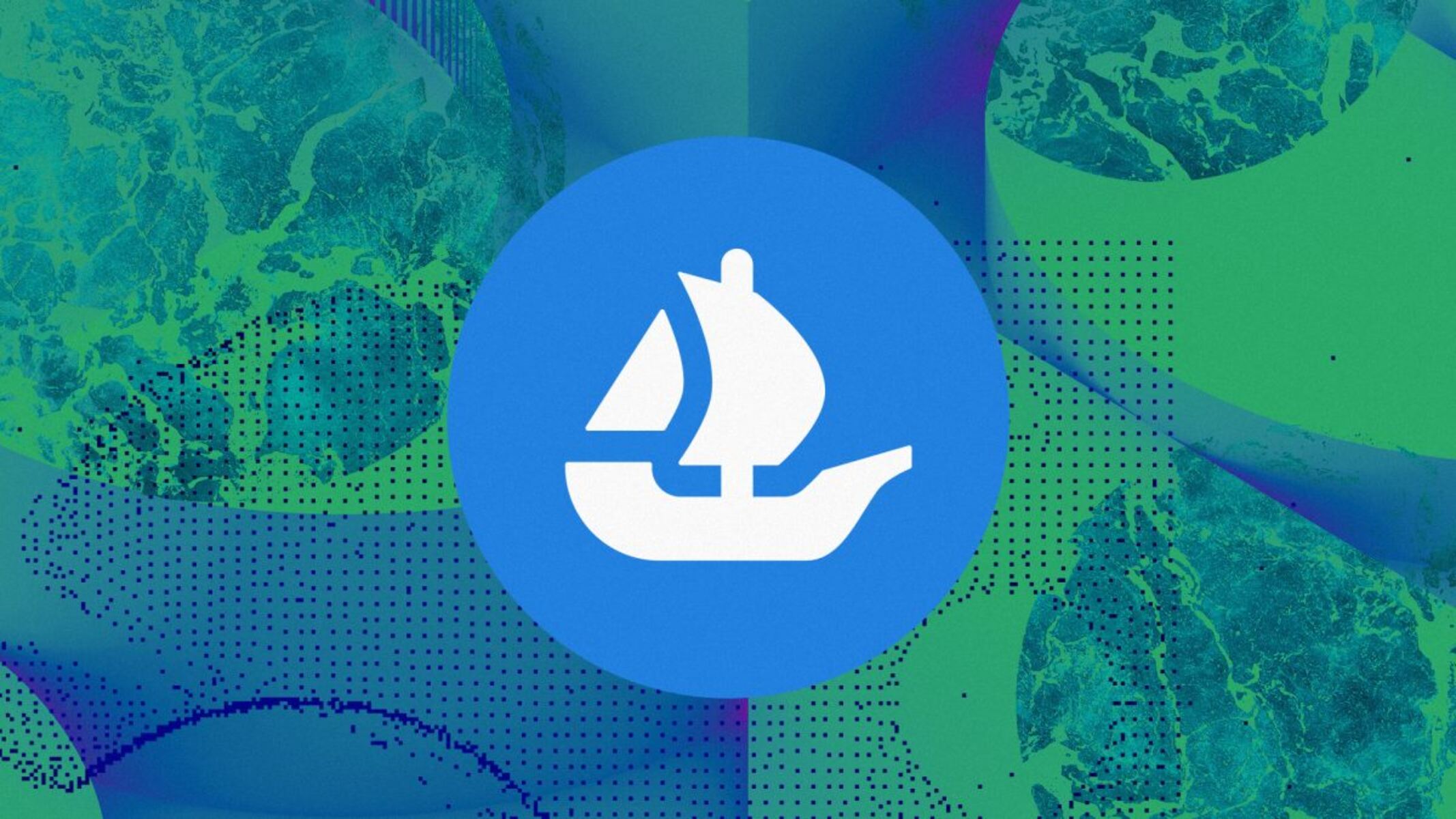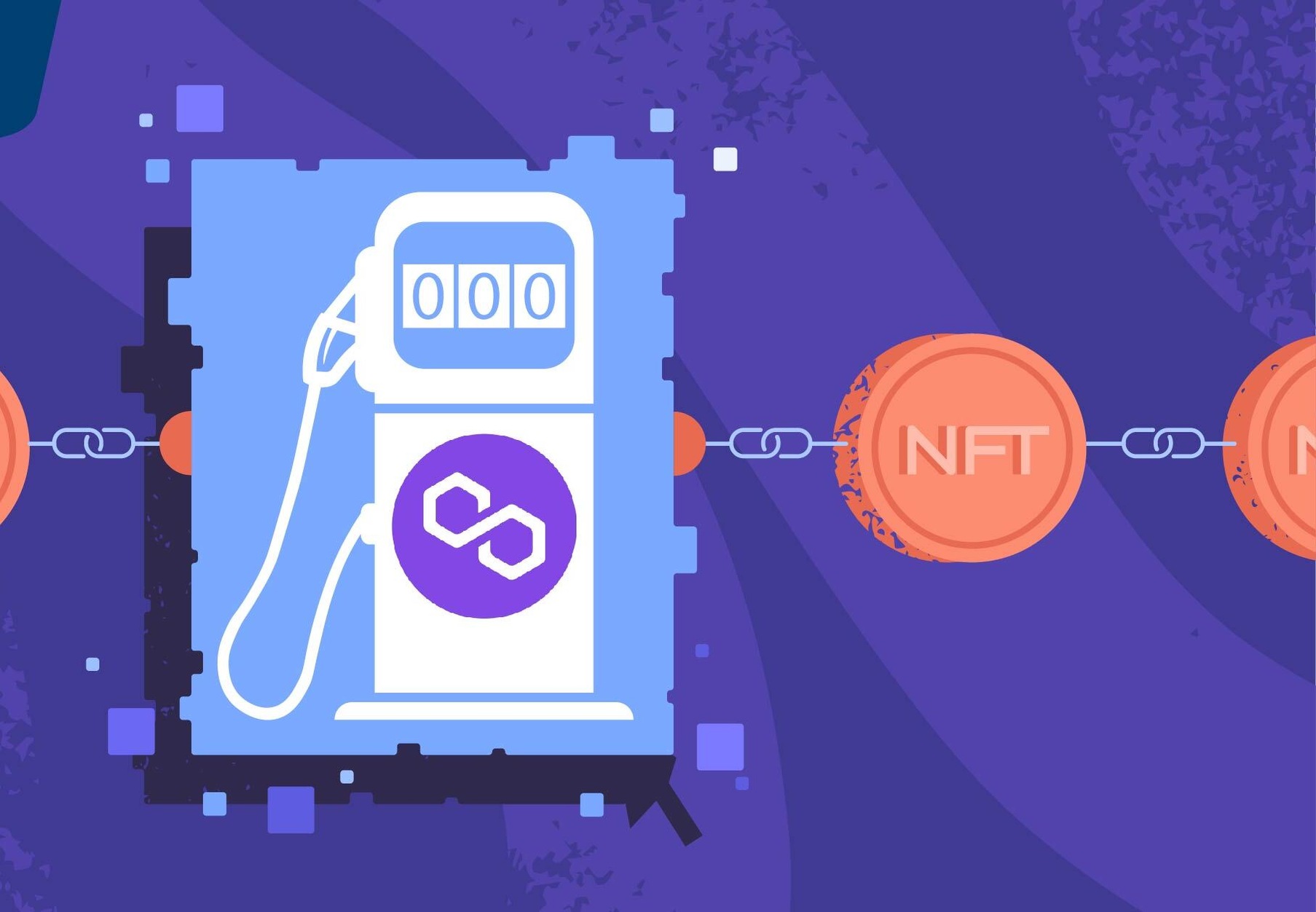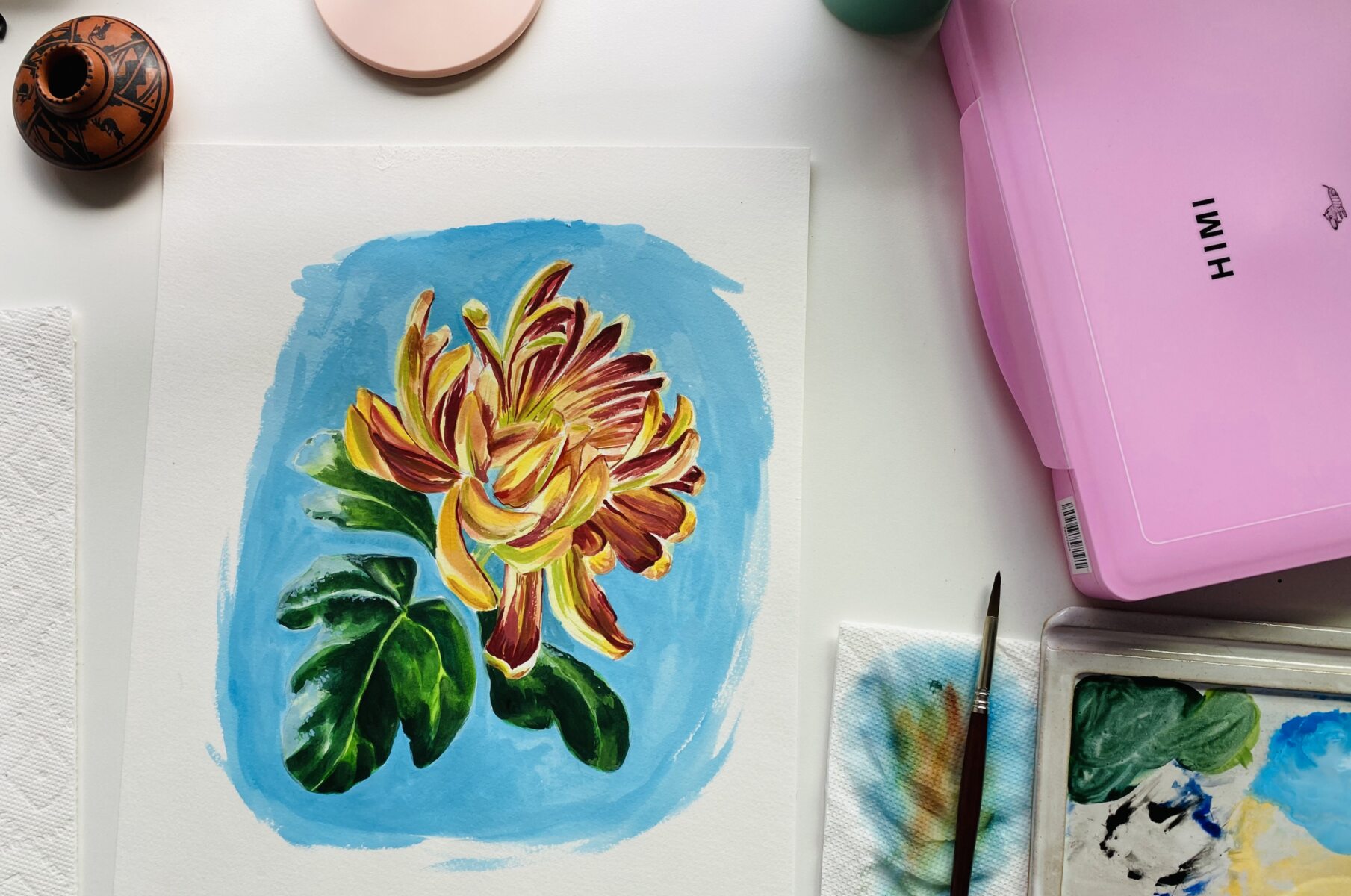Introduction
Welcome to the exciting world of Non-Fungible Tokens (NFTs), where digital assets can be bought, sold, and owned securely on the blockchain. NFTs have gained immense popularity in recent years, revolutionizing the way we perceive and trade digital art, collectibles, and virtual assets.
If you’re curious about how to mint your own NFT and join this thriving marketplace, you’ve come to the right place. In this article, we’ll guide you through the step-by-step process of creating and launching your NFT.
Whether you’re an artist looking to showcase your digital creations, a content creator seeking to monetize your unique content, or simply an enthusiast eager to explore this new digital frontier, the process of minting an NFT can appear daunting at first. However, with the right knowledge and tools, it can be incredibly rewarding.
By minting an NFT, you can transform your digital assets into verifiably unique tokens that can be bought and sold on various NFT platforms. These platforms provide a marketplace where collectors and investors can discover, bid on, and purchase NFTs.
In this guide, we’ll walk you through each step of the minting process, from choosing a platform and setting up a wallet to creating or selecting your NFT art, uploading it to the platform, configuring metadata, setting a price, and finally, promoting and selling your NFT.
So, if you’re ready to dive into the world of NFTs and make your mark in the digital art scene or any other NFT domain, let’s embark on this exciting journey together.
What is an NFT?
Before we delve into the process of minting an NFT, let’s first understand what exactly an NFT is. NFT stands for Non-Fungible Token. “Fungible” refers to something that is interchangeable or replaceable with another item of the same value, such as money or cryptocurrencies like Bitcoin or Ethereum.
On the other hand, non-fungible assets are unique and cannot be replaced by anything else. This uniqueness and scarcity make NFTs highly valuable in the digital world. In simple terms, an NFT is a digital representation of ownership or proof of authenticity for a particular asset, whether it’s artwork, music, videos, virtual real estate, or even virtual goods in video games.
What sets NFTs apart from traditional digital files is the element of blockchain technology. NFTs are built on blockchain platforms like Ethereum, which provide a transparent, decentralized ledger that verifies and records the ownership of the asset. This ensures the authenticity and provenance of the NFT.
One of the key features of NFTs is the ability to store metadata. Along with the digital asset itself, NFTs can contain additional information such as the creator’s name, description, and other relevant details that contribute to the uniqueness and value of the asset.
This combination of blockchain technology and metadata storage allows artists and creators to showcase their work in a new and innovative way while providing collectors and buyers with a secure and verifiable way to own and trade these digital assets.
The value of an NFT is determined by various factors, including the demand for the asset, its uniqueness, the reputation of the creator, and the rarity of the token. NFTs have gained significant attention in the art world, with digital artworks reaching astonishing prices in online auctions and marketplaces.
It’s important to note that buying and owning an NFT does not grant you copyright or intellectual property rights over the underlying digital asset. The creator still retains those rights, but as the NFT holder, you have proven ownership and the ability to transfer or sell the token.
Now that we have a clear understanding of what NFTs are and their significance in the digital realm, let’s explore the process of minting an NFT and how you can get started in this exciting space.
Understanding the Process
Before diving into the step-by-step process of minting an NFT, it’s important to have a clear understanding of the overall workflow involved. Minting an NFT involves several key steps, starting from choosing a suitable NFT platform and setting up a compatible wallet to uploading your artwork, configuring metadata, setting a price, and promoting and selling your NFT. Let’s take a closer look at each step:
- Choosing an NFT Platform: There are numerous NFT platforms available, each with its own features, user base, and selling fees. Research different platforms, evaluate their reputation, and choose one that aligns with your goals and target audience.
- Setting Up a Wallet: To mint and trade NFTs, you’ll need a compatible wallet that supports the blockchain network on which the NFT platform operates. Most popular platforms are built on the Ethereum blockchain, so you’ll need an Ethereum-compatible wallet like MetaMask to securely store your NFTs.
- Creating or Selecting Your NFT Art: Decide whether you want to create original artwork or select existing digital assets to tokenize. If creating your own artwork, consider the digital format, resolution, and quality to ensure it translates well as an NFT.
- Uploading Your Art to the NFT Platform: Once you’ve chosen your artwork, navigate to your chosen NFT platform and locate the option to upload your digital asset. Follow the platform’s guidelines for file formats, sizes, and any additional requirements.
- Configuring Metadata and Description: Provide key details about your NFT, including the title, description, year of creation, and any other relevant information that adds value to the artwork. The metadata serves as an integral part of the NFT, providing important context for potential buyers.
- Setting a Price and Royalties: Determine the price at which you want to sell your NFT. Additionally, consider setting royalties, which entitle you to a percentage of future sales if the NFT gets resold on the platform.
- Minting Your NFT: Once you’ve completed all the necessary details, execute the minting process on the platform. This action creates a unique token associated with your artwork on the blockchain, effectively transforming it into an NFT.
- Promotion and Selling Your NFT: After minting your NFT, it’s crucial to promote it through various channels. Utilize social media, online communities, and NFT marketplaces to build awareness and attract potential buyers. Engage with interested individuals, respond to inquiries, and be proactive in marketing your NFT.
Understanding and following these steps will contribute to a successful NFT minting experience. While the process may seem intricate at first, each step plays a vital role in ensuring that your NFT receives the recognition it deserves in the competitive NFT marketplace.
Step 1: Choosing an NFT Platform
When venturing into the world of minting NFTs, the first and crucial step is selecting the right NFT platform. There are several platforms available, each with its own unique features, user base, and fee structures. Consider the following factors when choosing an NFT platform:
- Reputation and Credibility: Research and evaluate the reputation of different NFT platforms. Look for platforms with a track record of successfully hosting and selling NFTs. Consider platforms that have gained recognition in the NFT community and have established partnerships and collaborations with notable artists and creators.
- User Base: Assess the user base and community of each platform. A platform with a robust and engaged user base increases the visibility and potential reach of your NFT. Look for platforms that attract both collectors and buyers in your niche or target market.
- Platform Fees: Evaluate the fees charged by each platform for minting and selling NFTs. Some platforms have a flat fee structure, while others charge a percentage of each transaction. Consider your budget and expected sales when choosing a platform with favorable fee structures.
- Platform Features: Compare the features offered by different platforms. Some platforms provide additional services like auction capabilities, customizable storefronts, and social features that can enhance the visibility and discoverability of your NFTs. Choose a platform that aligns with your specific needs and desired functionalities.
- User-Friendly Interface: Consider the platform’s user interface (UI) and user experience (UX). A user-friendly platform makes it easier for you to navigate and manage your NFTs, update metadata, track sales, and communicate with potential buyers. A well-designed interface can contribute to a smoother and more enjoyable minting experience.
Take the time to explore different NFT platforms, read reviews, and join relevant online communities or forums to gather insights and opinions from other creators and users. Consider reaching out to artists who have experience minting NFTs and ask for their recommendations and experiences with different platforms.
Remember that choosing the right NFT platform is essential as it can significantly impact the visibility, exposure, and success of your NFTs. Take your time, do thorough research, and consider the long-term potential and compatibility with your artistic goals before making a final decision.
Minting your NFT on a reputable and suitable platform sets the stage for the subsequent steps in the process, from setting up your wallet to uploading your artwork and promoting your NFT to potential buyers.
Step 2: Setting Up a Wallet
Once you’ve chosen an NFT platform to mint and sell your NFTs, the next step is to set up a compatible wallet. Wallets are used to securely store, send, and receive cryptocurrencies and NFTs on the blockchain. Most NFT platforms, including popular ones like Ethereum-based platforms, require users to have a compatible wallet.
Here’s how you can set up a wallet:
- Choose a Wallet Type: There are different types of wallets available, including software wallets, hardware wallets, and online wallets. Software wallets are applications that you download and install on your phone or computer. Hardware wallets are physical devices that store your NFTs offline for added security. Online wallets are web-based wallets hosted on a third-party platform. Choose the wallet type that aligns with your preferences and security needs.
- Select a Compatible Wallet: Research and select a wallet that is compatible with the blockchain network used by your chosen NFT platform. For Ethereum-based NFTs, popular wallet options include MetaMask, MyEtherWallet (MEW), and Trust Wallet. Make sure to download the wallet from official sources only to avoid scams or malicious software.
- Install and Set Up the Wallet: Follow the instructions provided by the wallet provider to install the wallet on your device. Create a strong and unique password for your wallet, and consider enabling two-factor authentication (2FA) for added security. Make sure to back up your wallet’s recovery passphrase or seed phrase in a safe and secure location.
- Connect the Wallet to the NFT Platform: Once your wallet is set up, you’ll need to connect it to your chosen NFT platform. This is usually done by authorizing the platform to access your wallet and interact with your NFTs. The process may vary depending on the platform and wallet you’re using. Follow the platform’s instructions to connect your wallet successfully.
Setting up a wallet is a crucial step as it provides you with a secure place to store your NFTs and interact with the blockchain. It also enables you to view and manage your NFT collection, transfer your NFTs to other wallets or platforms, and receive payments when you sell your NFTs.
Remember to keep your wallet and recovery passphrase secure. Treat it as you would treat traditional financial accounts or valuable possessions. Be cautious of phishing attempts or sharing your wallet information with anyone untrustworthy.
With your wallet successfully set up and connected to your chosen NFT platform, you’re now ready to move on to the next steps of the minting process, which involve creating or selecting your NFT art and uploading it to the platform.
Step 3: Creating or Selecting Your NFT Art
With your wallet set up and connected, it’s time to focus on the heart of your NFT – the artwork. In this step, you have two options: creating original art or selecting existing digital assets to tokenize as NFTs.
If you choose to create original art, consider the following:
- Choose Your Medium: Decide on the medium you want to work with, whether it’s digital illustration, 3D modeling, photography, or any other form of digital creation. Select a medium that aligns with your skills, interests, and artistic vision.
- Showcase Your Unique Style: Showcase your artistic style and vision in your creations. NFTs are valued for their uniqueness, so aim to create something that stands out and captures the attention of potential buyers and collectors.
- Consider Digital Formats and Specifications: Keep in mind the requirements and specifications of the NFT platform you’ve chosen. Different platforms may have specific guidelines for file types, sizes, resolutions, and aspect ratios. Ensure that your artwork meets these specifications to ensure a smooth minting process.
- Quality and Presentation: Pay attention to the quality and presentation of your artwork. Strive for high-resolution and visually appealing pieces that look impressive when displayed on screens. Consider how your artwork will be viewed by potential buyers, whether on digital devices or in virtual galleries.
If you decide to select existing digital assets, you can choose from a wide range of options, including digital photographs, digital paintings, illustrations, animations, music, videos, and more. Ensure that you have the necessary license or rights to tokenize and sell the chosen artwork as an NFT.
Whether you create original art or select existing assets, remember that the quality, uniqueness, and appeal of your artwork play a crucial role in attracting buyers to your NFT. Stand out from the crowd by offering something visually captivating and original.
Once you have your NFT art finalized and ready, you’re ready to proceed to the next step: uploading your artwork to the NFT platform and beginning the minting process.
Step 4: Uploading Your Art to the NFT Platform
With your NFT art ready, it’s time to upload it to the chosen NFT platform. The process may vary slightly depending on the platform, but the general steps are as follows:
- Log in to Your Account: Access your account on the NFT platform using your credentials. If you don’t have an account yet, create one following the platform’s registration process.
- Navigate to the Upload Page: Find the option to upload or create a new NFT. This may be located in your account dashboard or a specific section dedicated to NFT creation.
- Select Your Art File: Choose the file of your artwork that you want to tokenize as an NFT. Ensure that the file format meets the platform’s requirements. Commonly accepted formats include JPEG, PNG, GIF, MP4, and SVG.
- Attach Metadata: Fill in the required metadata fields for your NFT. This typically includes details like the title, description, tags, edition number (if applicable), and any additional information you want to provide about the artwork. Pay attention to the character limits and formatting guidelines set by the platform.
- Provide Supporting Files: Some platforms allow you to attach additional files related to your NFT, such as high-resolution versions of the artwork, certificates of authenticity, or related text documents. This can add value and authenticity to your NFT.
- Set Royalties (Optional): Consider setting royalties for your NFT. Royalties are a percentage of the future sales that you, as the creator, will receive whenever your NFT is resold on the platform. It’s a way to earn ongoing revenue from your NFT even after the initial sale.
- Review and Confirm: Double-check all the information you provided, including the artwork file, metadata, supporting files, and royalties. Ensure that everything is correct and accurate before confirming the upload.
- Pay the Minting Fee: Depending on the platform, there may be a fee to mint your NFT. Review the fee structure and proceed with the payment using the platform’s accepted cryptocurrency or fiat payment methods.
Once you’ve successfully uploaded your artwork and completed the necessary steps, the platform will process your upload and generate a unique token for your NFT. This token represents the ownership and authenticity of your digital asset on the blockchain.
Remember to consider the guidelines and requirements of the NFT platform while uploading your artwork to ensure a smooth minting process. With your art uploaded, you’re now ready to move on to the next step: minting your NFT.
Step 5: Minting Your NFT
After successfully uploading your artwork to the NFT platform, the next step is to mint your NFT. Minting refers to the process of creating a unique digital token that represents ownership of your artwork on the blockchain. Here’s how you can mint your NFT:
- Access Your NFT Dashboard: Navigate to your NFT dashboard or the specific section of the platform dedicated to managing your NFTs.
- Locate the Artwork File: Find the artwork file that you previously uploaded. Usually, the platform will display a preview of your artwork along with its metadata.
- Select the Minting Option: Look for the option to mint your NFT and click on it. This action triggers the creation of a unique token on the blockchain, which represents your ownership of the artwork.
- Confirm the Minting Process: Review the details of your artwork, including the title, description, and metadata. Ensure everything is accurate and reflects your intention for the NFT. Once satisfied, confirm the minting process.
- Wait for Confirmation: The platform will then process the minting transaction. This process may take a few moments or longer, depending on the speed of the blockchain network. Be patient as the platform generates the unique token for your NFT.
- Receive the Minted NFT: Once the minting process is complete, you will receive the minted NFT in your designated wallet. The NFT will appear in your wallet’s collection, and you can view its details, ownership history, and other associated metadata.
Keep in mind that minting an NFT involves interacting with the blockchain network, which may incur transaction fees. Be prepared to pay these fees, which can vary depending on network congestion and the chosen blockchain platform.
Successful minting of your NFT establishes the unique identity and ownership of your artwork on the blockchain. With your NFT securely minted, you can now proceed to the next step: configuring metadata and adding descriptions to enhance the visibility and marketability of your NFT.
Step 6: Configuring Metadata and Description
Once you have minted your NFT, it is essential to configure the metadata and add a detailed description to provide potential buyers with valuable information about your artwork. The metadata and description play a crucial role in attracting attention and engaging potential collectors. Here’s how you can configure the metadata and description for your NFT:
- Access Your NFT Dashboard: Navigate to your NFT dashboard or the specific section dedicated to managing your minted NFTs on the platform.
- Find Your Minted NFT: Locate the recently minted NFT in your collection. It should be available for editing and customization.
- Edit Metadata: Click on the option to edit or configure the metadata for your NFT. This will allow you to add or modify the information associated with your NFT.
- Update Title and Description: Provide a catchy and descriptive title for your NFT that reflects the essence of the artwork. Craft a detailed description that showcases the inspirations, techniques, or stories behind the piece. Use keywords that accurately describe your artwork and make it easier for potential buyers to discover it.
- Add Relevant Tags: Add relevant tags or keywords to your NFT. Tags can help categorize your artwork and improve its discoverability within the platform’s search functionality. Think about the style, medium, subject matter, or any other relevant aspect that potential buyers might search for.
- Verify and Update Other Metadata: Ensure that other metadata fields, such as the artist’s name, creation date, and edition number (if applicable), are accurate and up-to-date. Verify if any additional fields need attention or information, such as provenance or special features of the NFT.
- Preview and Save Changes: Before finalizing the changes, use the platform’s preview feature to review how the metadata and description appear to potential buyers. Once satisfied, save the changes, ensuring that all information is accurate.
By configuring metadata and providing a detailed description, you are adding value and context to your NFT, making it more appealing and informative to potential buyers. Accurate metadata and clear descriptions help buyers understand the uniqueness, story, and artistic significance behind your artwork.
Remember to pay attention to any character limits or guidelines set by the platform. Use compelling language, descriptive imagery, and concise yet engaging descriptions to capture the interest of potential buyers.
With the metadata and description updated, you’re now ready to move on to the next step: setting a price and royalties for your NFT.
Step 7: Setting a Price and Royalties
Setting a price and royalties for your NFT is a critical step in the minting process. It determines the value of your artwork and the potential revenue you can earn from its sale, both initially and in the event of future resales. Here’s how you can set the price and royalties for your NFT:
- Access Your NFT Dashboard: Go to your NFT dashboard or the specific section dedicated to managing your minted NFTs on the platform.
- Select Your Minted NFT: Find the minted NFT for which you want to set the price and royalties. Usually, you’ll have the option to edit or configure the pricing details.
- Set the Initial Sale Price: Determine the initial selling price for your NFT. Consider factors such as the uniqueness of your artwork, its perceived value, and the demand for similar pieces in the market. Price it competitively within the range of comparable NFTs, considering the platform’s fee structure and your desired profit margin.
- Configure Royalties: Decide whether you want to set royalties for your NFT. Royalties entitle you, the creator, to a percentage of future sales of the NFT. This additional revenue stream allows you to earn a percentage whenever your NFT is resold on the platform. Determine the royalty percentage you want to set, keeping in mind the platform’s guidelines and any applicable legal requirements.
- Review and Confirm: Double-check the pricing details, including the sale price and royalties. Ensure that they align with your intentions and that you understand the implications of your choices. Take the time to review and ensure accurate information to avoid any potential issues.
- Save Changes: Once you are satisfied with the price and royalty settings, save the changes. The platform will then update the details associated with your NFT, making it available for sale at the specified price.
Pricing your NFT appropriately requires careful consideration. While aiming for a high sale price may seem attractive, it’s crucial to strike a balance that aligns with the market’s demand and perceived value of your artwork.
Setting royalties enables you to earn ongoing income as your NFT gets resold. It’s a way to retain a stake in the appreciation of your artwork’s value, even after the initial sale. Decide on a percentage that you find fair, considering both the platform’s guidelines and your long-term expectations.
Once the price and royalties are set, you’re ready for the next step: minting your NFT and making it available for sale on the platform’s marketplace.
Step 8: Minting Your NFT
With the pricing and royalty details configured, you’re ready to proceed with minting your NFT and making it available for sale on the NFT platform’s marketplace. The process of minting confirms the creation of a unique token on the blockchain that represents your ownership of the artwork. Here’s how you can mint your NFT:
- Access Your NFT Dashboard: Navigate to your NFT dashboard or the specific section dedicated to managing your minted NFTs on the platform.
- Locate the Minted NFT: Find the NFT for which you’ve configured the pricing and royalty information. It should be ready for the final minting process.
- Verify the Details: Review the details of your NFT, including the artwork, metadata, and pricing settings. Ensure that all information is accurate and aligns with your intentions.
- Initiate the Minting Process: Click on the option to mint your NFT. This action triggers the finalization of the token creation on the blockchain, firmly associating your artwork with the unique NFT token.
- Confirm the Minting Transaction: Follow the on-screen instructions to confirm and authorize the minting transaction. This may involve confirming wallet details, verifying your ownership of the NFT, and paying any associated blockchain transaction fees.
- Wait for Confirmation: The platform will process the minting transaction, which can take a short while or longer, depending on the blockchain network’s congestion. The transaction confirmation ensures the secure creation and storage of your NFT on the blockchain.
- Receive Confirmation of Minting: Once the minting process is complete, you’ll receive confirmation of the successful creation and association of the NFT token with your artwork. This confirms that your NFT is now officially minted and available for sale.
Once your NFT is minted and confirmed, it will appear in the marketplace of the NFT platform. Interested buyers can now discover, bid on, and potentially purchase your NFT.
Remember, the minting process requires interaction with the blockchain network, which may involve transaction fees. Understand the associated costs and ensure you have the necessary funds in your connected wallet to complete the minting transaction.
Congratulations! With your NFT successfully minted, you’re now one step closer to showcasing and selling your valuable digital artwork to the world.
Step 9: Promotion and Selling Your NFT
After successfully minting your NFT, it’s time to focus on promoting and selling your artwork to potential buyers and collectors. Effective promotion is crucial to gaining visibility, attracting attention, and increasing the chances of a successful sale. Here’s how you can promote and sell your NFT:
- Share on Social Media: Utilize various social media platforms to showcase your NFT and create buzz around your artwork. Post images or videos of your artwork along with a captivating description, relevant hashtags, and links to the marketplace where your NFT is listed.
- Engage with Online Communities: Join online communities, forums, and platforms dedicated to NFTs, digital art, or your specific niche. Participate in discussions, share your work, and engage with potential buyers. Be friendly, responsive, and actively promote your NFT within these communities.
- Collaborate with Influencers and Creators: Seek collaborations with influencers, artists, or content creators who have a strong following in the NFT community or your target audience. Partnering with influencers can expand your reach, increase exposure, and attract more buyers to your NFT.
- List on NFT Marketplaces: Consider listing your NFT on multiple NFT marketplaces to reach a wider audience. Each platform has its community and user base, providing additional opportunities for exposure. Research the most popular and reputable NFT marketplaces and choose those that align with your target audience.
- Showcase in Virtual Galleries and Exhibitions: Explore virtual galleries or online exhibitions that specialize in NFTs or digital art. Submit your work for consideration, aiming to showcase your NFT alongside other talented artists. Virtual galleries provide a unique and immersive experience for potential buyers, increasing the chances of a sale.
- Network and Collaborate with Collectors: Reach out to collectors, both online and offline, who have shown an interest in NFTs or digital art. Attend events or conferences focused on the NFT space, where you can network, collaborate, and establish connections with potential buyers or collectors interested in investing in your NFT.
- Market Your Unique Selling Points: Clearly communicate the unique selling points of your NFT, such as its rarity, limited edition status, or any special features associated with the artwork. Highlight what sets your NFT apart from others in the marketplace, emphasizing its unique value proposition.
Remember to be proactive in promoting your NFT. Regularly update, refresh, and engage with your audience. Share updates about your artistic journey, behind-the-scenes insights, or any future plans to maintain interest and attract potential buyers.
Keep track of any inquiries, bids, or offers for your NFT, and be prompt in responding to interested parties. Building relationships with potential buyers can lead to successful sales and potential future collaborations.
By actively promoting your NFT and utilizing various marketing strategies, you enhance your chances of finding buyers who appreciate and value your artwork, contributing to the successful sale of your NFT.
Conclusion
Congratulations on completing the journey of minting your own NFT! We’ve covered the step-by-step process, from choosing an NFT platform to promoting and selling your artwork.
Through this guide, you’ve learned that NFTs have revolutionized the way we perceive and trade digital assets, providing artists, creators, and collectors with exciting opportunities in the digital art world.
Remember, choosing the right NFT platform is crucial, as it determines the visibility and potential reach of your NFT. Setting up a compatible wallet ensures the secure storage and management of your NFTs on the blockchain.
Creating or selecting remarkable artwork and uploading it to the NFT platform lays the foundation for minting your NFT. By configuring metadata and crafting engaging descriptions, you provide valuable information to potential buyers, enhancing the discoverability and marketability of your NFT.
Setting a fair price and considering royalties allows you to determine the value of your artwork and earn ongoing income. Finally, promoting your NFT through various channels, engaging with communities, and collaborating with influencers increase the chances of a successful sale.
Always remember to conduct thorough research, stay informed about the changing landscape of the NFT market, and adapt your strategies accordingly. The NFT space is continually evolving, presenting new opportunities and challenges.
Now that you’re equipped with the knowledge and steps involved in minting an NFT, take the next step with confidence. Let your creativity flourish, connect with like-minded individuals, and showcase your unique artwork to the world.
Embrace the extraordinary possibilities offered by NFTs, and may your journey in the world of digital art and NFTs be fulfilling and rewarding.







